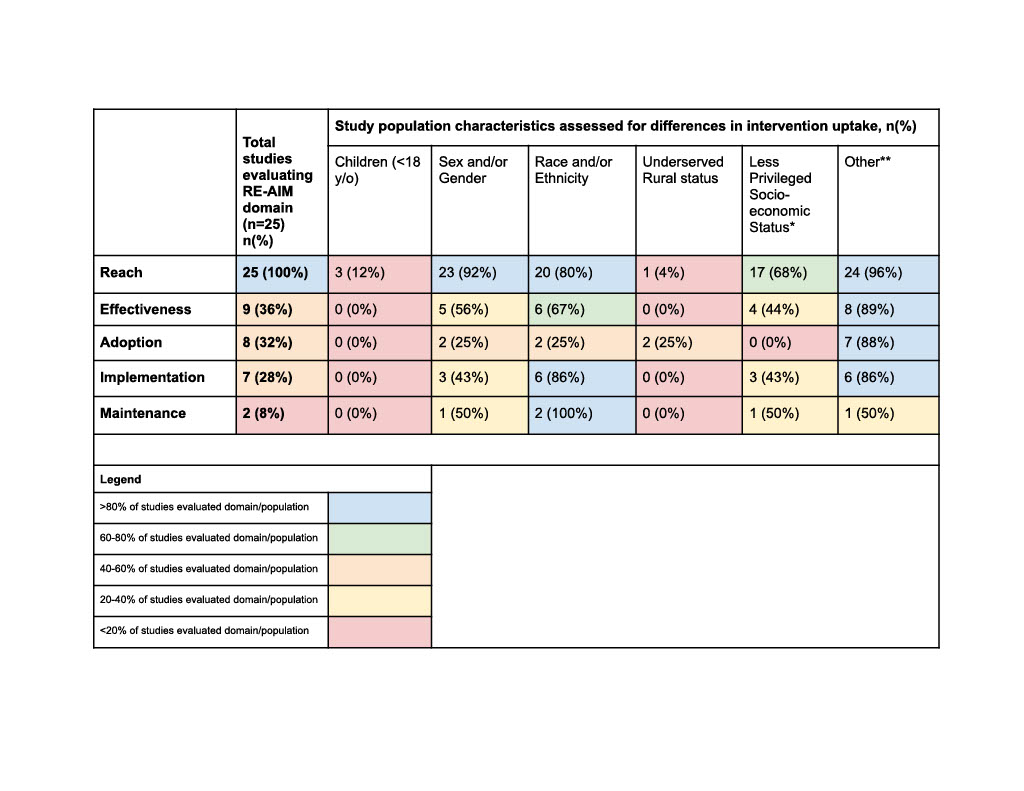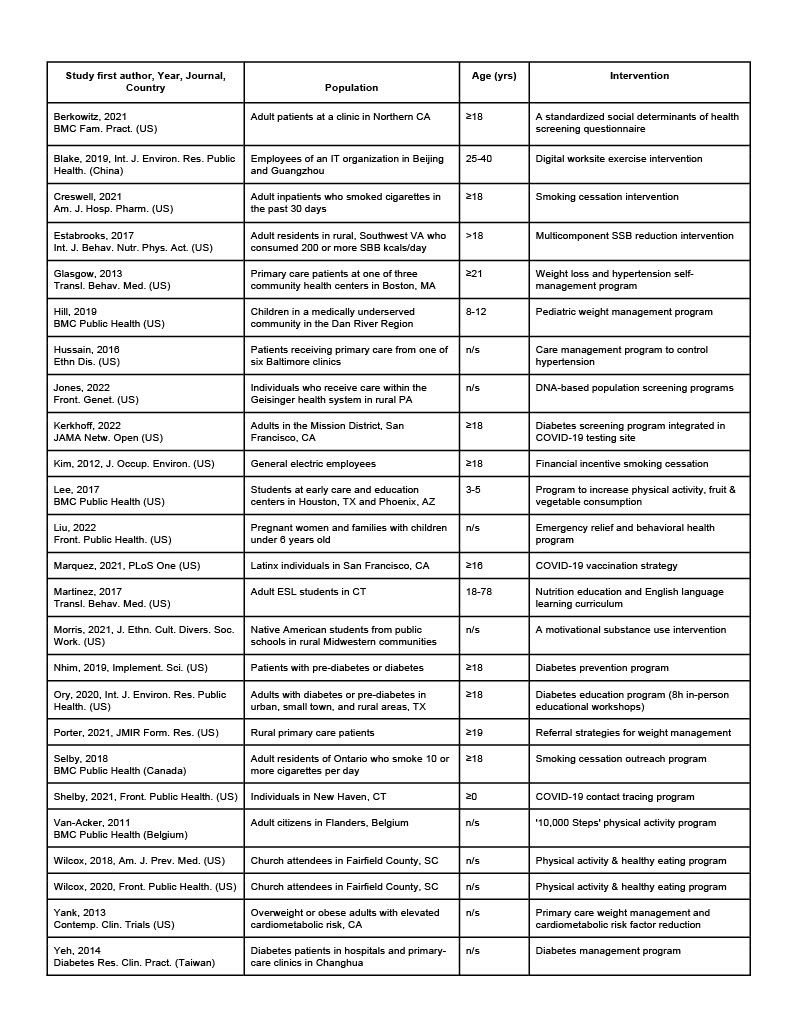Background: Research and quality improvement programs may differentially reach some population groups and not others, thereby worsening health disparities. RE-AIM is a well-established implementation science framework used to evaluate the impact of interventions across five domains: Reach, Effectiveness, Adoption, Implementation, and Maintenance. This study aimed to summarize past applications of RE-AIM to evaluate for disparities in research, particularly among children and National Institutes of Health (NIH)-defined health disparity populations.
Methods: We conducted a systematic scoping review, following the PRISMA Extension for Scoping Reviews. We searched PubMed to identify articles that used the RE-AIM framework to evaluate health disparities, excluding Non-English articles, review articles, articles that did not apply the RE-AIM framework, and those that did not evaluate health disparities. We also conducted a citation review of all included studies and relevant protocols and review articles. We extracted data from each eligible article to determine: (i) which RE-AIM domains were evaluated, and (ii) which population characteristics were assessed for differences in intervention uptake. Studies were grouped based on the inclusion of children < 18 years of age as well as NIH-defined populations that experience health disparities: sex/gender minorities, race/ethnicity minorities, low socioeconomic status, and those in underserved rural communities. This research was completed before the addition those with disabilities, a fifth NIH-defined population.
Results: Of 25 eligible studies (Table 2), all evaluated intervention Reach (100%), 9 evaluated Effectiveness (36%), 8 evaluated Adoption (32%), 7 evaluated Implementation (28%), and 2 evaluated Maintenance (8%, Table 1). While the majority of the eligible studies (18, 72%) evaluated for disparities in >1 RE-AIM domains, only 1 study evaluated all 5 RE-AIM domains. Six studies (24%) included children and 3 of these examined differences in Reach based on age. 23 (92%) studies looked at differences based on sex and/or gender, 20 (80%) analyzed race and/or ethnicity, 17 (68%) assessed socioeconomic status indicators, and 3 (12%) analyzed urban-rural differences. Twenty-five studies (100%) examined differences in other clinical or demographic characteristics.
Conclusions: The RE-AIM framework provides an opportunity to evaluate disparities in research and quality improvement initiatives. In studies conducted to date, the domains of Effectiveness, Adoption, Implementation, and Maintenance are under-represented compared to Reach, suggesting that the RE-AIM framework is not being used to its full potential. Additional pediatric-focused research applying this framework to examine disparities in intervention delivery is needed to prevent generalization of adult-focused interventions to children. Overall, this application of RE-AIM may serve to improve health equity in research and quality improvement.


